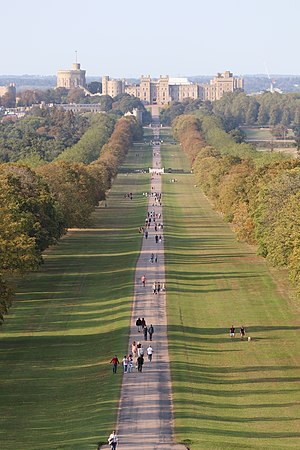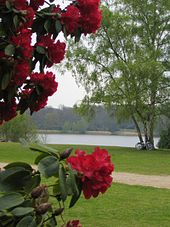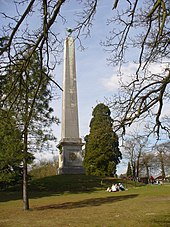
Richmond Park, in the London Borough of Richmond upon Thames, is the largest of London's Royal Parks and is of national and international importance for wildlife conservation. It was created by Charles I in the 17th century as a deer park. It is now a national nature reserve, a Site of Special Scientific Interest and a Special Area of Conservation and is included, at Grade I, on Historic England's Register of Historic Parks and Gardens of special historic interest in England. Its landscapes have inspired many famous artists and it has been a location for several films and TV series.

Kingston Lacy is a country house and estate near Wimborne Minster, Dorset, England. It was for many years the family seat of the Bankes family who lived nearby at Corfe Castle until its destruction in the English Civil War after its incumbent owners, Sir John Bankes and Dame Mary, had remained loyal to Charles I.

Thomas Sandby was an English draughtsman, watercolour artist, architect and teacher. In 1743 he was appointed private secretary to the Duke of Cumberland, who later appointed him Deputy Ranger of Windsor Great Park, where he was responsible for considerable landscaping work.

Sandringham House is a country house in the parish of Sandringham, Norfolk, England. It is one of the royal residences of Charles III, whose grandfather, George VI, and great-grandfather, George V, both died there. The house stands in a 20,000-acre (8,100 ha) estate in the Norfolk Coast Area of Outstanding Natural Beauty. The house is listed as Grade II* and the landscaped gardens, park and woodlands are on the National Register of Historic Parks and Gardens.
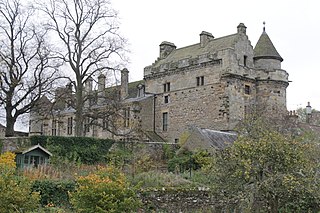
Falkland Palace, in Falkland, Fife, Scotland, is a royal palace of the Scottish Kings. It was one of the favourite places of Mary, Queen of Scots, who took refuge there from political and religious turmoil of her times.

Royal Lodge is a Grade II listed house in Windsor Great Park in Berkshire, England, half a mile north of Cumberland Lodge and 3.2 miles (5.1 km) south of Windsor Castle. The site of homes since the 17th century, the present structure dates from the 19th century, and was expanded in the 1930s for the then duke of York, the future king George VI. Its central section is 3 storeys, with wings two storeys and it has about 30 rooms, with 7 bedrooms. The Royal Chapel of All Saints was built on the grounds in the 1820s.
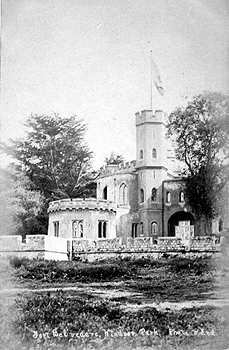
Fort Belvedere is a Grade II* listed country house on Shrubs Hill in Windsor Great Park, in Surrey, England. The fort was predominantly constructed by Jeffry Wyatville in a Gothic Revival style in the 1820s.

Cumberland Lodge is a 17th-century Grade II listed country house in Windsor Great Park 3.5 miles south of Windsor Castle. Since 1947 it has been occupied by the charitable foundation known as Cumberland Lodge. The gardens of Cumberland Lodge are Grade I listed on the Register of Historic Parks and Gardens.

Frogmore House is a 17th-century English country house owned by the Crown Estate. It is a historic Grade I listed building. The house is located on the Frogmore estate, which is situated within the grounds of the Home Park in Windsor, Berkshire. Half a mile south of Windsor Castle, Frogmore was let to a number of tenants until the late 18th century, when it was used intermittently as a residence for several members of the British royal family.

Savernake Forest stands on a Cretaceous chalk plateau between Marlborough and Great Bedwyn in Wiltshire, England. Its area is approximately 4,500 acres.

The Savill Garden is an enclosed part of Windsor Great Park in England, created by Sir Eric Savill in the 1930s. It is managed by the Crown Estate and charges an entrance fee. The garden includes woodland, ornamental areas and a pond. The attractions include the New Zealand Garden, the Queen Elizabeth Temperate House and trees planted by members of the Royal Family. In June 2010, a new contemporary rose garden designed by Andrew Wilson and Gavin McWilliam of Wilson McWilliam Studio was opened by Queen Elizabeth II.
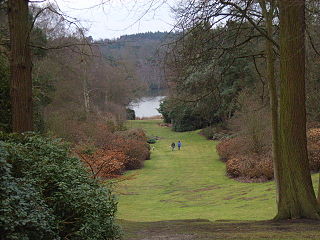
The Valley Gardens are 220 acres (0.89 km2) of woodland garden, part of the Crown Estate located near Englefield Green in the English county of Surrey, on the eastern edge of Windsor Great Park. The Valley Gardens and the nearby Savill Gardens are Grade I listed on the Register of Historic Parks and Gardens.

Windsor Castle is a royal residence at Windsor in the English county of Berkshire. It is strongly associated with the English and succeeding British royal family, and embodies almost a millennium of architectural history.

Marselisborg Palace is a royal residence of the Danish royal family in Aarhus. It has been the summer residence of Queen Margrethe II since 1967.

The Home Park, previously known as the Little Park, is a 2.65 km2 royal park near Windsor, Berkshire, administered by the Crown Estate of the United Kingdom. It is the private grounds of Windsor Castle. It lies mainly on the eastern side of the castle in the former civil parish of Windsor in the English county of Berkshire. The park includes the Frogmore estate, and several private organisations related to the estate have facilities in the park. To the Home Park's south is the Windsor Great Park, largely open to the public.

Virginia Water Lake lies on the southern edge of Windsor Great Park, in the borough of Runnymede in Surrey and the civil parishes of Old Windsor and Sunningdale in Berkshire, in England. It is a man-made lake taking its name from a natural body of water of the same name. There is a village of Virginia Water which stretches out to the east of the lake. The grounds of the lake, nearby Fort Belvedere, and the Clockcase are all Grade I listed on the Register of Historic Parks and Gardens.

Windsor Forest and Great Park is a 1,778.9-hectare (4,396-acre) biological Site of Special Scientific Interest in Berkshire and Surrey, located south of Windsor. It is a Special Area of Conservation and Windsor Forest is a Nature Conservation Review site, Grade I. Landscaped woodland gardens are Grade I listed on the Register of Historic Parks and Gardens of Special Historic Interest. Windsor Great Park is a Royal Park of 2,020 hectares, including a deer park,
The office of Ranger of Windsor Great Park was established to oversee the protection and maintenance of the Great Park at Windsor in the English county of Berkshire. The ranger has always been somebody close to the monarch.
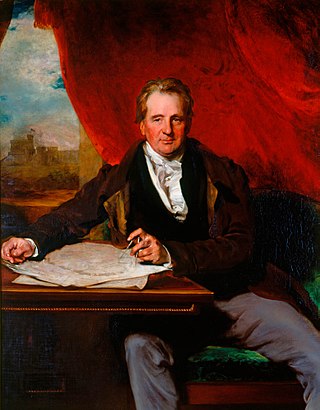
Sir Jeffry Wyatville was an English architect and garden designer. Born Jeffry Wyatt into an established dynasty of architects, in 1824 he was allowed by King George IV to change his surname to Wyatville. He is mainly remembered for making alterations and extensions to Chatsworth House and Windsor Castle.

The Royal Chapel of All Saints or Queen Victoria's Chapel is a Grade II listed church in the grounds of the Royal Lodge in Windsor Great Park, Berkshire, England and is a Royal Peculiar, serving as an informal parish church for the inhabitants and staff of the Windsor Great Park. Services at the chapel are often attended by members of the British royal family, and Queen Elizabeth II regularly worshipped at the church for reasons of privacy. The chaplaincy of the Royal Chapel All Saints is held by one of the Canons of the College of St George at St George's Chapel, Windsor Castle.
